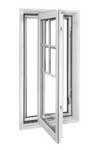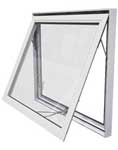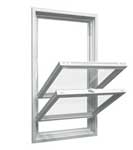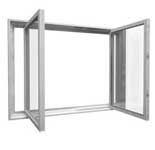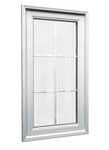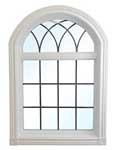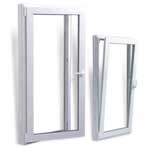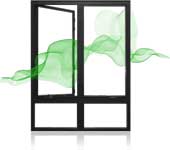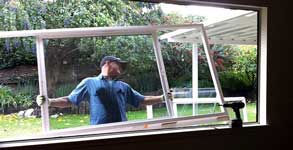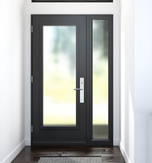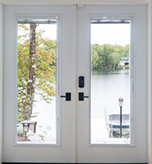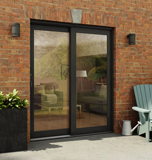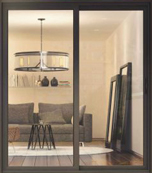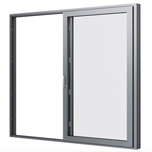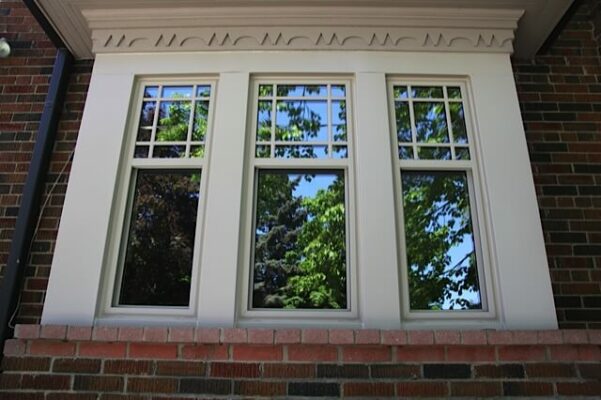When it comes to window installation, there are two primary methods: brick-to-brick and retrofit. Each method has its own advantages and considerations, making choosing between them a crucial decision in any construction or renovation project.
This blog post will dive into the key differences between brick-to-brick and retrofit window installation, examining their respective benefits, challenges, and suitability for various scenarios. By gaining a deeper understanding of these methods, you will be better equipped to make informed decisions that align with your project’s specific requirements and goals.
Brick-to-Brick Window Installation
Brick-to-brick window installation, also known as new construction installation, involves removing the existing window frame entirely and installing a new window unit directly into the rough opening of the building. This method is typically employed during new construction projects or major renovations where the window openings are created from scratch or significantly altered.
The process begins with removing the old window frame, including any surrounding trim and flashing. This exposes the rough opening in the wall, allowing for inspection and preparation of the opening to ensure proper fit and sealing. The new window unit is then positioned within the opening and secured in place, typically using fasteners such as screws or nails.
One of the primary advantages of brick-to-brick installation is the ability to customize the window opening to fit the exact dimensions of the new window unit. This ensures a tight and precise fit, minimizing air leakage and enhancing energy efficiency. Additionally, this method allows for the installation of larger or uniquely shaped windows that may not be compatible with retrofit installation.
However, brick-to-brick installation is more labour-intensive and time-consuming compared to retrofit installation. It may also require additional construction work, such as framing adjustments or exterior finishing, to seamlessly integrate with the surrounding building envelope. As such, it is typically more costly and is often reserved for projects where the benefits outweigh the added expense and effort.
Retrofit Window Installation
Retrofit window installation, also referred to as replacement window installation, involves fitting a new window unit into the existing window frame without removing the surrounding trim or disturbing the interior or exterior surfaces of the building. This method is commonly chosen for renovation projects that aim to upgrade or improve the energy efficiency, aesthetics, and functionality of existing windows without extensive construction work.
The process begins with measuring the existing window opening to ensure the new unit fits properly. The old window sashes and hardware are removed, leaving the original frame intact. The new window unit, which is pre-assembled and glazed, is inserted into the existing frame and secured in place using screws or other fasteners. Additional weatherstripping and insulation may be added around the perimeter of the window to enhance energy efficiency and seal any gaps.
One of the main advantages of retrofit window installation is its simplicity and efficiency. Since the existing frame remains in place, there is minimal disruption to the surrounding structure and interior finishes. This results in faster installation times and lower labour costs than brick-to-brick installation. Additionally, retrofit windows are often designed to fit standard window openings, making them a convenient option for many renovation projects.
Another benefit of retrofit installation is its cost-effectiveness. By avoiding the need for extensive construction work and preserving the existing frame, homeowners can achieve significant savings compared to the more involved process of brick-to-brick installation. Furthermore, modern retrofit windows are available in various styles, materials, and energy-efficient options, allowing homeowners to customize their windows to suit their aesthetic preferences and performance requirements.
However, retrofit window installation may not be suitable for all situations. Since the new window unit is fitted into the existing frame, there may be limitations on the size and shape of the window that can be installed. Additionally, retrofit installation may provide a different insulation and air sealing level than brick-to-brick installation, mainly if the existing frame is old or deteriorated.
Which Window Installation Is the Best for You?
Determining the best window installation method for your project depends on various factors, including your specific goals, budget, timeline, and the condition of your existing windows and surrounding structures. Both brick-to-brick and retrofit window installation have their advantages and considerations, so it’s essential to evaluate each option based on your unique needs and preferences. Here are some key points to consider when making your decision:
Project Scope
If you are undertaking a new construction project or major renovation where the window openings are being created from scratch or significantly altered, brick-to-brick installation may be the preferred choice. On the other hand, if you are looking to upgrade existing windows without extensive construction work, retrofit installation may be more suitable.
Customization
Brick-to-brick installation offers greater flexibility for customization, allowing you to create window openings tailored to your specific preferences and requirements. If you have unique window shapes or sizes, or if energy efficiency is a top priority, brick-to-brick installation may be the best option.
Cost and Time Considerations
Retrofit window installation is typically more cost-effective and efficient than brick-to-brick installation since it involves less labour and construction. If you’re working within a tight budget or timeline, retrofit installation may be the more practical choice.
Condition of Existing Windows
Consider the condition of your existing windows and frames. If the frames are deteriorated or damaged, retrofit installation may not provide the best long-term solution, as it relies on the integrity of the existing frame. In such cases, brick-to-brick installation may be necessary to address structural issues and ensure proper sealing and insulation.
Aesthetic Preferences
Both installation methods offer a range of window styles, materials, and finishes. Consider your aesthetic preferences and how each installation method aligns with the overall design and architectural style of your home or building.
Energy Efficiency
If improving energy efficiency is a priority, consider each installation method’s insulation and air-sealing capabilities. While both brick-to-brick and retrofit installation can enhance energy efficiency, brick-to-brick installation may offer superior air tightness and insulation performance.
Hiring a Professional Window Installer
Whether you are looking for brick-to-brick window installation or a retrofit window installation, the professional installation services of Eco Choice Windows & Doors can guarantee a seamless and thorough installation that will meet your standards. Contact us today to learn more about our sales process and how we can help you on your road to new windows.
Eco Choice Windows & Doors is a leading supplier and installer of quality windows and doors. We have been in business for over 15 years, installing windows and doors for many satisfied customers across the province.
We have the knowledge, experience and expertise to recommend the windows and doors that best suit your needs for window replacements and new windows. Simply put, we supply the best quality products, expertly installed and built to enhance energy efficiency throughout the home.
Call us today at (416) 690-9992 or complete our convenient online form to book your free, no-obligation consultation!

